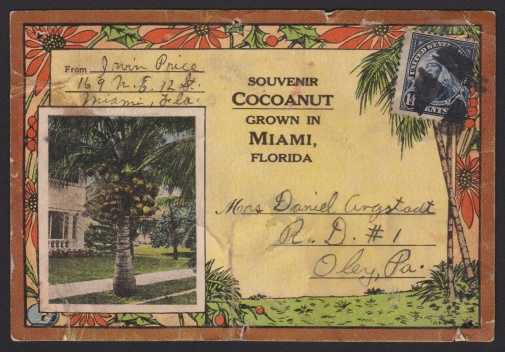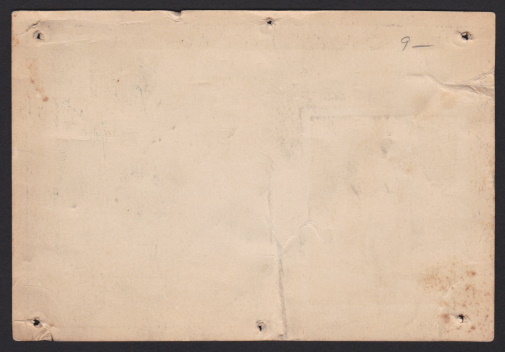Souvenir Cocoanut Parcel Label
While examples of the 14¢ American Indian stamp used by itself to pay parcel post rates tend to be very interesting, such items lacking dated postmarks can also provide a challenge to the postal historian since it is not immediately apparent when a particular piece was mailed.
Both of these statements are true in the case of this solo example attached to a multicolored postcard-sized label with an illustration of a palm tree and the legend “souvenir cocoanut grown in Miami, Florida.” The label was presumably attached to a crate or package containing a coconut and was mailed from Miami to Oley, Pennsylvania.


It is just over 1,040 miles from Miami to Oley. At first glance, this would appear to fall within the sixth parcel post, which covered packages traveling 1,000–1,400 miles, but there were no 14¢ zone 6 rates during the American Indian stamp’s period of use.1 2 Prior to April 15, 1925, however, a zone 5 (600–1,000 miles) rate equaling 14¢ did exist: 8¢ for the first pound, and 6¢ for each additional pound.
While it is possible that other stamps may have been attached to the parcel itself rather than to the label pictured here, or that postage was underpaid or overpaid, the simplest explanation is that the distance from the center of the Miami parcel post unit to the boundary of the unit in which Oley sat was no more than 1,000 miles. In that case, this is an example of the 14¢ American Indian stamp paying the fifth zone rate for a package weighing up to two pounds.
References
- Distance from Miami, FL to Oley, PA. Distance Between Cities. Accessed 20 June 2022.
- Beecher, Henry W., and Anthony S. Wawrukiewicz. U.S. Domestic Postal Rates, 1872–2011. 3rd ed. Bellefonte, Pennsylvania: American Philatelic Society, 2011.
Published 2022-06-20